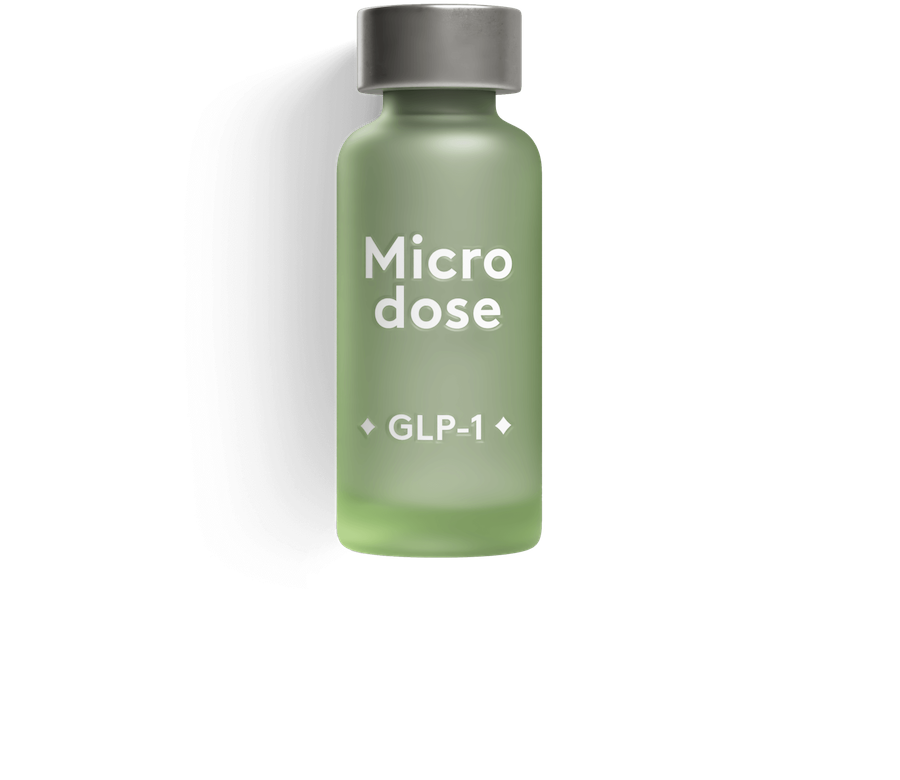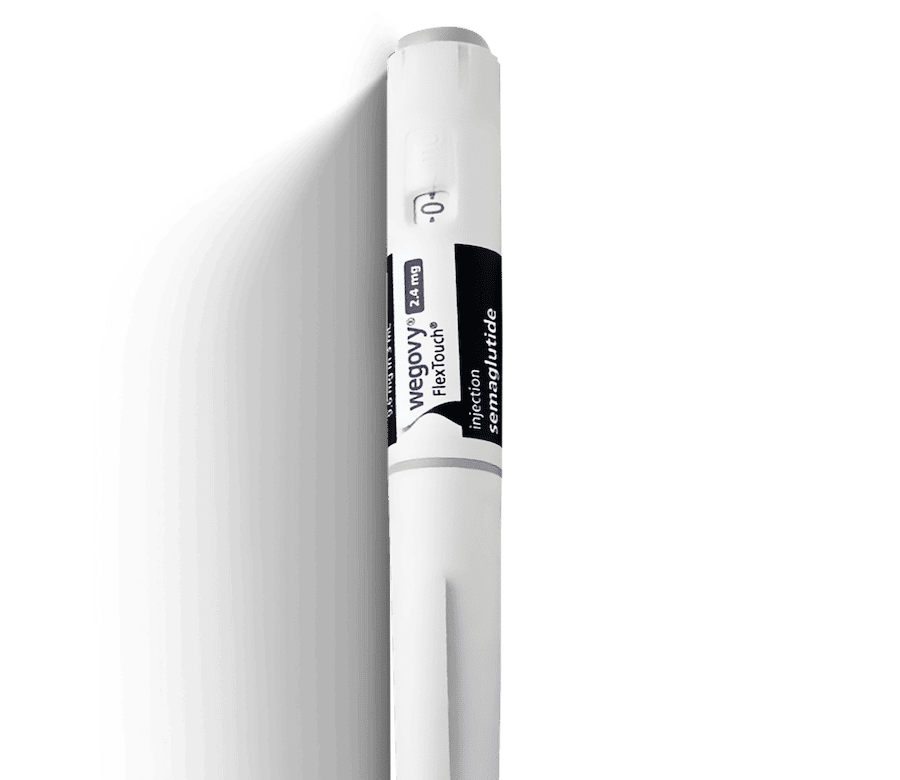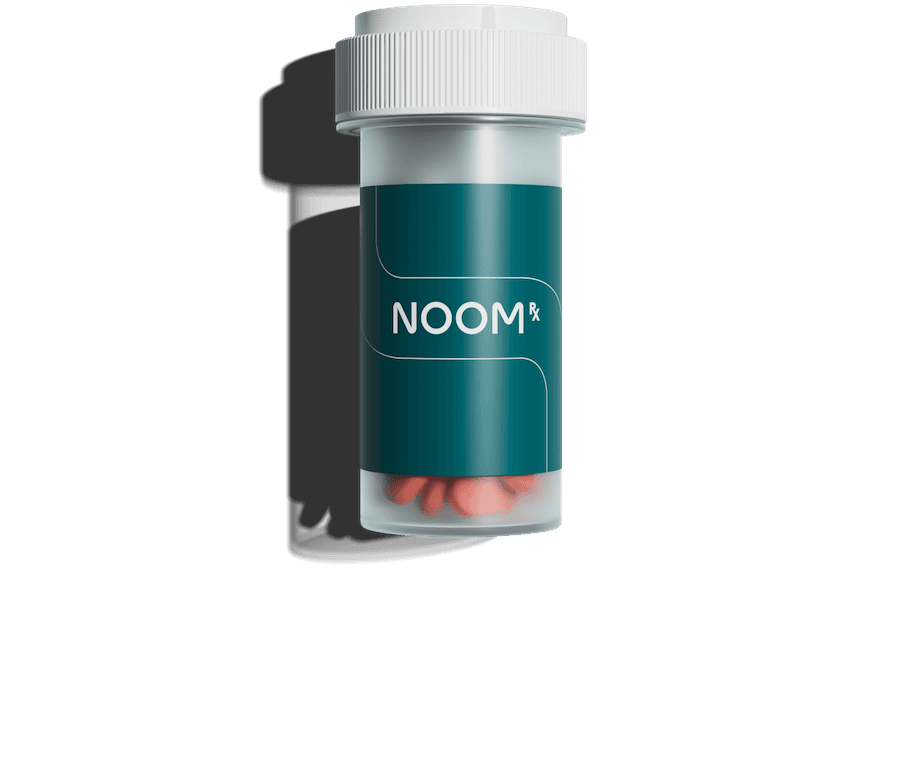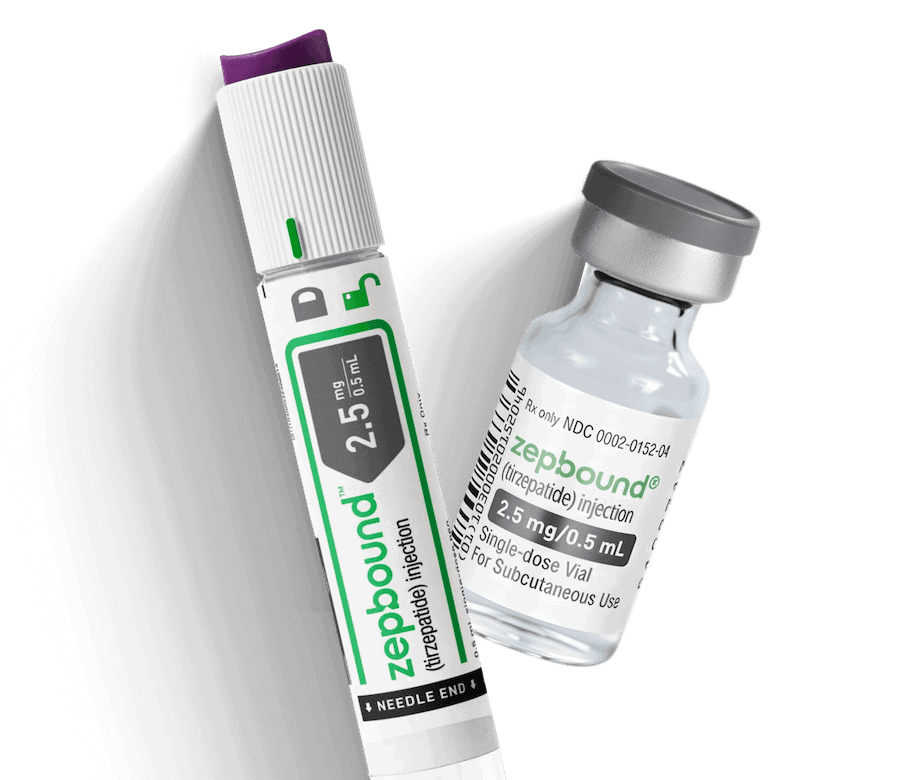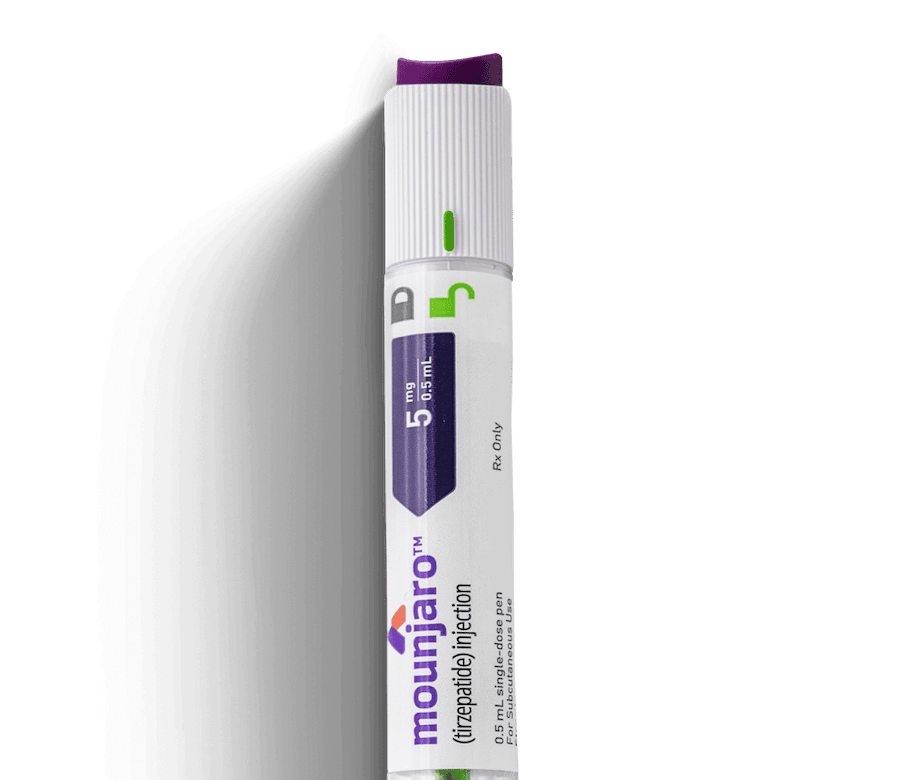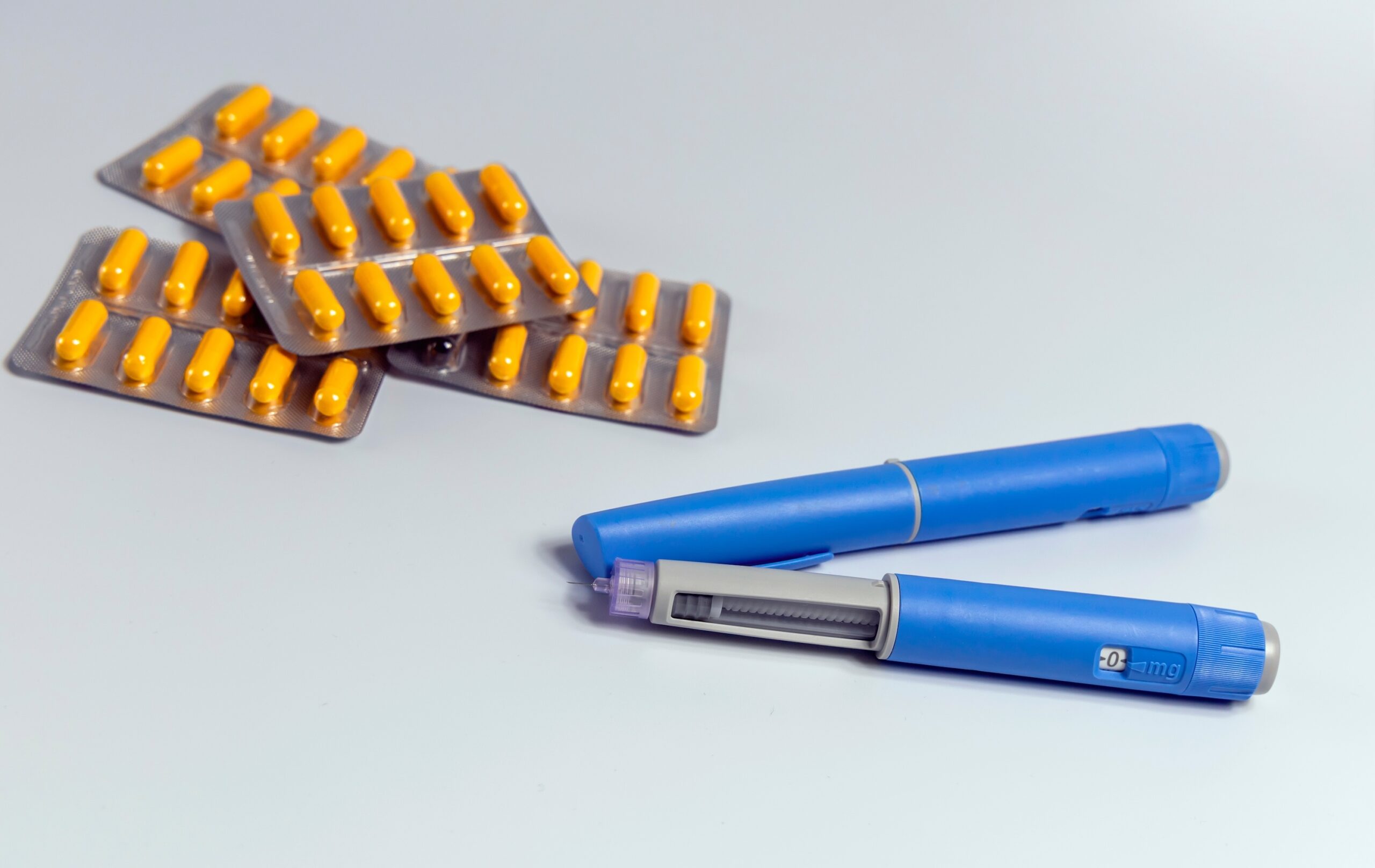- Liraglutide vs. Ozempic®: What are they?
- Liraglutide vs. Ozempic®: Which is better for weight loss?
- Who can take liraglutide or Ozempic® for weight loss?
- Liraglutide vs. Ozempic®: Costs and insurance
- Liraglutide vs. Ozempic®: Side effects and safety
- Liraglutide vs. Ozempic®: How they’re taken
- Choosing between Liraglutide vs. Ozempic®
- Alternatives to liraglutide, Ozempic®, and other forms of semaglutide
What you’ll learn:
- Ozempic® (semaglutide) typically leads to more weight loss than liraglutide medications like Saxenda® or Victoza®, making it the stronger option for most people.
- Many people also prefer Ozempic’s once-weekly injection schedule over liraglutide’s daily dosing.
- Both medications work by mimicking the GLP-1 hormone to regulate appetite and blood sugar, but your choice may come down to side effects, cost, or how your body responds.
Ozempic® has become so popular for off-label weight loss that many people use its name interchangeably with GLP-1 medications—but Ozempic is just one option. It contains semaglutide, the same active ingredient found in Wegovy® and Rybelsus®. Another GLP-1 medication, liraglutide, is the active ingredient in Saxenda®, Victoza®, and a generic version, which are less well-known but can also play a role in weight loss and diabetes management.
Both semaglutide and liraglutide belong to the same medication class (GLP-1 receptor agonist) and work similarly, but there are key differences in how they’re prescribed, how effective they are for weight loss, and what they cost. We’ll explain how these medications work, what they’re approved for, and how they stack up for weight loss.
We will also go through some alternative medications that might work better and cost less than a liraglutide medication or Ozempic. Here’s everything you need to know when talking to your doctor about weight loss medications.
Rx weight-loss, the right way, with Noom
Get access to prescription weight loss medication with Noom.Liraglutide vs. Ozempic®: What are they?
GLP-1 drugs like liraglutide and semaglutide (Ozempic®) mimic a hormone called GLP-1, short for glucagon-like peptide-1. The important thing to know about this hormone is that it helps regulate appetite, slow digestion, and stabilize blood sugar.
GLP-1 also helps send signals to your brain that say that you are full after you’ve eaten. GLP-1 medications extend this signal. The result? You may find yourself eating less without feeling deprived, helping to promote weight loss.
Sign up for Noom Digest!
Stay on top of your wellness journey with the latest Noom news, thoughtful articles, and a healthy dose of inspiration delivered right to your inbox.We mentioned the medications that have either liraglutide or semaglutide above, but here’s a rundown of what these medications are approved and can be used for:
Semaglutide:
- Ozempic®: Approved for type 2 diabetes; often used off-label for weight loss
- Wegovy®: Approved for weight loss and to help prevent heart disease
- Rybelsus®: Approved for type 2 diabetes; can be used off-label for weight loss
Liraglutide
- Victoza®: Approved to treat type 2 diabetes (for adults and kids 10+), and may help reduce the risk of heart disease
- Saxenda®: Approved for weight management in adults and teens, and may also help with heart health
- Generic liraglutide: Approved for type 2 diabetes (ages 10+), with similar heart health benefits
Liraglutide vs. Ozempic®: What are the differences?
An important difference to keep in mind between semaglutide medications like Ozempic and liraglutide medications is that most semaglutide medications require weekly injections, while liraglutide is a daily injection. The exception is Rybelsus, a semaglutide medication that comes as a pill you take once a day.
The other important factor to consider is that weight loss with injectable semaglutide, like Ozempic (off-label) and Wegovy, is generally more than with liraglutide. We’ll go into more specifics below.
Liraglutide vs. Ozempic®: What are the similarities?
While Ozempic® and liraglutide have their differences, they also share a lot of common ground, especially in how they work and what to expect when starting them. Here’s what they have in common:
- They require slow step-up dosing: To reduce side effects, both drugs follow a gradual dose increase, called titration. This gradual increase helps your body get used to the medication and minimizes side effects.
- They share similar side effects: Semaglutide and liraglutide tend to have similar side effects. Both can cause nausea, constipation, diarrhea, and fatigue, especially when first starting a medication or increasing the dose. These effects usually ease over time as your body adjusts.
- How you take them: Whether it’s daily or weekly, Ozempic, Wegovy, and all forms of liraglutide are injectable medications delivered under the skin with a prefilled injection pen designed for home use. Again, Rybelsus is the only form of semaglutide that is in pill form. Liraglutide doesn’t have a pill version.
Can you switch between liraglutide and Ozempic®?
Yes, you can switch between liraglutide and Ozempic®, but it should always be done under the guidance of your healthcare provider.
People may consider switching for a few reasons:
- Greater weight loss results with Ozempic® or Wegovy, the version of semaglutide that is approved for weight loss.
- Convenience, since Ozempic® is a weekly injection compared to liraglutide’s daily dosing, you might prefer weekly dosing.
- Cost or insurance coverage. If one is more affordable or better covered by your plan, you might want to switch to that..
- Side effect tolerance. If one medication has side effects that don’t improve, you might want to try the other.
Liraglutide vs. Ozempic®: Which is better for weight loss?
Studies show that most people lose more weight with injectable semaglutide, like Ozempic and Wegovy, than with liraglutide. But how your body responds, your health background, budget, and lifestyle choices all matter.
Liraglutide vs. Ozempic®: How much weight can I lose?
These averages give you a general idea of what to expect. Again, Ozempic, Victoza, Rybelsus, and generic liraglutide are not FDA-approved for weight loss, but can be prescribed off-label. Wegovy and Saxenda are approved for weight loss.
Liraglutide
- Victoza/generic liraglutide: 1.8 mg of liraglutide, the maximum approved dose for Victoza and generic liraglutide, can lead to an average body weight loss of 5% after 56 weeks.
- Saxenda: People taking 3 mg of liraglutide, the maximum approved dose for Saxenda, lost about 5 to 10% of their body weight after 56 weeks.
Semaglutide
- Ozempic®: The 2 mg dose of semaglutide (the maximum for Ozempic) can lead to a 10% weight loss after 40 weeks.
- Wegovy: People taking 2.4 mg of semaglutide lost an average of 15% of their body weight over 68 weeks.
If weight loss is your goal, taking semaglutide in the form of Ozempic or Wegovy is likely to lead to greater weight loss. Again, your lifestyle choices and how your body responds will determine how much weight you lose.
How long does it take to see results with Ozempic or liraglutide?
While everyone’s experience is different, most people start seeing changes within the first few weeks. That said, real progress tends to build gradually, so patience and consistency are key.
Here’s how much body weight, on average, you can expect to lose with both medications:
After 3 months:
After 1 year:
While it might be tempting to expect fast results, weight loss with GLP-1 medications is a gradual and steady process, 1 to 2 pounds per week. Your body is adjusting, your habits are evolving, and the scale will reflect those changes in time.
Who can take liraglutide or Ozempic® for weight loss?
To get a prescription for a GLP-1 medication, you have to meet specific criteria. You can take these medications if you have a:
- BMI of 30 or more
or
- Have a BMI of 27 or more and at least one weight-related condition, like high blood pressure or high cholesterol
Saxenda® is also approved for kids aged 12 and up who weigh at least 132 pounds and have a BMI in the 95th percentile or higher for their age and sex.
Liraglutide vs. Ozempic®: Who can’t take them?
You can’t use liraglutide or Ozempic® if you:
- Have a personal or family history of medullary thyroid carcinoma (MTC) or multiple endocrine neoplasia syndrome type 2 (MEN 2)
- Are allergic to semaglutide or any of the ingredients in liraglutide or Ozempic®
- Are pregnant, planning to become pregnant, or breastfeeding
Your doctor will decide if it’s right for you if you have:
- A history of pancreatitis, as the medication may increase your risk.
- Severe gastrointestinal conditions, such as gastroparesis
- Kidney disease or kidney failure, as this medication may worsen kidney function
- Severe diabetic retinopathy, since GLP-1 medications could increase the risk of complications
If you take liraglutide/Ozempic® to lose weight, will you need to keep taking it forever?
You won’t have to keep taking liraglutide or Ozempic® indefinitely, but in most cases, if you stop taking these medications, you’re likely to regain some of the weight you lost. Since they help regulate appetite, blood sugar, and metabolism, and once they’re no longer in your system, those effects fade.
Here’s what can happen if you stop:
- Increased hunger as appetite regulation returns to pre-medication levels
- Weight regain, often gradually but sometimes quickly, especially without strong habits in place
That’s why it’s so important to pair medication with long-term behavior change. You’ll get the best results—and be more likely to maintain them—by building a healthier relationship with food, movement, and mindset. A program like Noom can help you do just that, offering a personalized plan that supports your goals with the right mix of coaching, education, and habit-building tools.
Liraglutide vs. Ozempic®: Costs and insurance considerations
GLP-1 medications are known to be pricey, and they are rarely covered by insurance for weight loss purposes, but there are ways to make them fit your budget. Here’s what you can expect to pay for each medication and its sister medications:
| Brand name | Cost per month without insurance |
|---|---|
| Saxenda® | Up to $1,349 depending on the dose. Learn more about the cost of Saxenda®. |
| Victoza® | 2-pen package: $544 3-pen package: $815 Note: How much you pay per month will depend on your dose. If you are taking 1.2 mg, you will use two pens per month. If you are taking 1.8 mg, you will use three. Learn more about the cost of Victoza®. |
| Generic liraglutide | 2-pen package: $470 3-pen package: $700 Note: How much you pay per month will depend on your dose. If you are taking 1.2 mg, you will use two pens per month. If you are taking 1.8 mg, you will use three. |
| Ozempic® | $998 Learn more about the cost of Ozempic®. |
| Wegovy® | $1,350NovoCare® Pharmacy: $499 (if you don’t have insurance coverage)Learn more about the cost of Wegovy®. |
| Rybelsus® | $998 Learn more about the cost of Rybelsus® |
Does Medicare cover liraglutide or Ozempic®?
As of 2025, Medicare generally doesn’t cover liraglutide or semaglutide when they’re prescribed for weight loss. If the prescription is for an FDA-approved use like type 2 diabetes, coverage may be possible. Here’s a closer look:
- Liraglutide: Victoza® may be covered under Medicare Part D for type 2 diabetes.
- Semaglutide: Ozempic® and Rybelsus® might be covered under Medicare Part D if prescribed for diabetes.
It’s best to check directly with your Medicare plan provider, as some Medicare Advantage plans may include extra wellness benefits or obesity care options that go beyond what Original Medicare offers.
Liraglutide vs. Ozempic®: Side effects and safety considerations
While these medications both follow a step-up dosing schedule to reduce side effects, most people still experience some side effects as their digestion changes with the medication. More severe side effects are rare but can occur. Let’s discuss them below:
Common side effects
Most side effects from GLP-1 medications are mild and tend to ease up as your body adjusts. Staying hydrated, eating smaller meals, and easing into your new routine can go a long way in managing discomfort. Here are some of the most commonly reported side effects:
- Nausea
- Vomiting
- Diarrhea or constipation
- Stomach pain
- Fatigue
To help you better understand how often these side effects occur and how they compare between medications, here’s a look at what people have experienced:
| Side effect | Saxenda (3 mg liraglutide) | Victoza (1.8 mg liraglutde) | Ozempic® (1 mg semaglutide) |
|---|---|---|---|
| Nausea | 39% | 20% | 20% |
| Vomiting | 16% | 9% | 9% |
| Diarrhea | 21% | 12% | 9% |
| Constipation | 19% | 5% | 3% |
Serious side effects and warnings
While rare, some side effects can be more serious, and everyone who takes a GLP-1 should be aware of the signs of the most serious conditions.
Here are some conditions that require immediate medical help if experienced:
- Pancreatitis: Symptoms include severe abdominal pain that may spread to your back, with or without vomiting. Learn more about the risk of pancreatitis with semaglutide.
- Vision changes: Get immediate medical attention if you have sudden vision changes.
- Low blood sugar (hypoglycemia): Symptoms include dizziness, shakiness, blurred vision, fast heartbeat, and jittery feelings. This is more common in people taking diabetes medications. Read about semaglutide and hypoglycemia.
- Kidney problems: Dehydration from diarrhea, nausea, or vomiting can worsen kidney function. Go to the ER if you have reduced urination, swelling in the ankles or legs, fatigue, or shortness of breath.
- Gallbladder problems: Watch for upper abdominal pain, fever, jaundice, or clay-colored stools, which could indicate gallbladder issues.
- Allergic reaction: Symptoms include swelling of the face, lips, tongue, or throat, difficulty breathing or swallowing, and a rapid heartbeat. Seek immediate emergency care if you suspect a reaction.
- Thyroid tumors: Both liraglutide and semaglutide medications carry FDA warnings about the potential risk of thyroid C-cell tumors. Although this risk has only been observed in animal studies, these medications aren’t recommended for people with a personal or family history of medullary thyroid carcinoma (MTC) or multiple endocrine neoplasia syndrome type 2 (MEN 2).
For a full breakdown of potential risks and side effects, see our side effect guides for Saxenda®, Victoza®, and Ozempic®.
Liraglutide vs. Ozempic®: Doses and how they’re taken
Getting the most out of your medication starts with knowing how to take it correctly. Whether you’re using Ozempic® or liraglutide, following your doctor’s dosing schedule is important for getting the most out of treatment.
Here’s a quick breakdown of how each medication is typically taken and its dose escalation:
| Brand name | Doses | How it’s taken | How the dose is escalated |
|---|---|---|---|
| Saxenda® – Liraglutide | 0.6 mg, 1.2 mg, 1.8 mg, 2.4 mg, 3.0 mg | Daily injection | The dose of Saxenda is increased by 0.6mg every week until you find an effective dose with the fewest side effects. Read more about getting the dose of Saxenda right. |
| Victoza® – Liraglutide | 0.6 mg, 1.2 mg, 1.8 mg | Daily injection | When used for off-label weight loss, Victoza® is increased by 0.6mg until you find an effective dose with the fewest side effects. |
| Ozempic® – Semaglutide | 0.25 mg, 0.5 mg, 1 mg, 2 mg | Weekly injection | When used for off-label weight loss, Ozempic® starts at 0.25mg for the first four weeks and then doubles weekly as tolerated. The goal is to find an effective dose with the fewest side effects. Read more about getting the dose of Ozempic right. |
| Wegovy® – Semaglutide | 0.25 mg, 0.5 mg, 1 mg, 1.7 mg, 2.4mg | Weekly injection | When used for weight loss, Wegovy® is taken as a weekly injection, and the dose is increased every 4 weeks as tolerated. The goal is to find an effective dose with the fewest side effects. Read more about getting the dose of Wegovy right. |
| Rybelsus® – Semaglutide | 3 mg, 7 mg, 14 mg | Once daily tablet | When used for off-label weight loss, the dose for Rybelsus® starts at 3 mg once daily for the first 30 days, then increases to 7 mg once daily and 14 mg, as needed and tolerated. Read more about getting the dose of Rybelsus right. |
Choosing between Liraglutide vs. Ozempic®: Which is right for me?
Choosing between liraglutide and Ozempic® (or another form of semaglutide) is about finding what fits best with your lifestyle, budget, and health goals. Everyone’s experience is different, and the right choice comes down to what is manageable and sustainable for you.
To help you compare, here’s a side-by-side look at how these two medications stack up:
| Active ingredient | Liraglutide | Semaglutide |
|---|---|---|
| Brand names and uses | Victoza®: Type 2 diabetes (off-label for weight loss) and to prevent heart disease Saxenda®: Weight loss and to prevent heart disease Generic liraglutide: Type 2 diabetes (off-label for weight loss) | Ozempic®: Type 2 diabetes (off-label for weight loss) Wegovy®: Weight loss and to prevent heart disease Rybelsus®: Type 2 diabetes (off-label for weight loss) |
| Manufacturer | Victoza® and Saxenda®: Novo Nordisk Generic liraglutide: Teva Pharmaceuticals and others | All forms of semaglutide are manufactured by Novo Nordisk |
| Available doses | Victoza®: 0.6 mg, 1.2 mg, 1.8 mg Saxenda®: 0.6 mg, 1.2 mg, 1.8 mg, 2.4 mg, 3 mg Generic liraglutide: 0.6 mg, 1.2 mg, 1.8 mg | Ozempic®: 0.25 mg, 0.5 mg, 1 mg, 2 mg Wegovy®: 0.25 mg, 0.5 mg, 1 mg, 1.7 mg, 2.4mg Rybelsus®: 3 mg, 7 mg, 14 mg |
| How it’s taken | All forms of liraglutide are injected daily with a prefilled pen. | Ozempic® and Wegovy®: Weekly injection Rybelsus®: Daily pill |
| Effectiveness | 3 mg (Saxenda) – 5-10% average body weight loss after 56 weeks | Ozempic® (2 mg): 10% average body weight loss after 40 weeks Wegovy® (2.4mg): 15% average body weight lost after 68 weeks. Rybelsus: People lost about 4% of their body weight |
| Cost monthly | Victoza®: $544 (2-pen), $815 (3-pen) Saxenda®: $1,349 Generic liraglutide: $470 (2-pen), $700 (3-pen) | Ozempic®: $998 per month without insurance Wegovy®: $1,350 per month without insurance Rybelsus®: $998 per month without insurance |
| Insurance coverage | Victoza®: Occasionally covered for type 2 diabetes, rarely for weight loss Saxenda®: Rarely covered for weight loss Generic liraglutide: Occasionally covered for type 2 diabetes, rarely for weight loss | Ozempic®: Occasionally covered for diabetes, but rarely for weight loss. Wegovy®: Rarely covered for weight loss Rybelsus®: Occasionally covered for diabetes, but rarely for weight loss. |
Alternatives to liraglutide, Ozempic®, and other forms of semaglutide
While liraglutide and Ozempic® are widely used and effective for many, they’re not the only tools out there. If you’ve tried one of these medications and didn’t love the results, or you’re just curious about other options, tirzepatide may be a promising alternative.. As a dual GIP and GLP-1 receptor agonist, tirzepatide works slightly differently and has shown even greater potential for both blood sugar control and weight loss.
Here’s how it compares:
| Medication | Brand names and uses | Cost per month (without insurance) | Effectiveness | How it’s taken |
|---|---|---|---|---|
| Tirzepatide – GLP-1/GIP receptor agonist | Zepbound®: weight loss and obstructive sleep apnea (OSA) Mounjaro®: type 2 diabetes, off-label weight loss | Zepbound®: Pens: $1,087 Vials: $349 (2.5 mg) $499 (5 mg, 7.5 mg, 10 mg) Learn more Mounjaro®: $1,080 Learn more | People lost an average of 21% of body weight at 72 weeks. | Zepbound® and Mounjaro®: Weekly injection |
Other weight loss alternatives
If GLP-1 receptor agonists aren’t suitable for you, there are other medications that can be prescribed to help people lose weight. Let’s take a look at a few options.
| Medication | Brand names | Cost per month (without insurance) | Effectiveness | How it’s taken |
|---|---|---|---|---|
| Metformin (off-label weight loss) | Glucophage®, Fortamet®, Glumetza® | Generic: $4–$15 Brand name: $100–$500+ Learn more. | People lost an average of about 6% of their body weight over six months while taking metformin. | Pill taken up to two times daily |
| Phentermine | Lomaira®, Adipex-P® | $27-$100 | About 80% of people with a BMI of 30 or more lost at least 5% of their body weight in 6 months. | Daily pill |
| Diethylpropion | Tenuate®, Tenuate Dospan® | $40-$85 | People lost an average of 10% of their body weight in 6 months. | Pill taken one to three times daily |
| Naltrexone and bupropion | Contrave® | $600-$800 CurAccess™: $99 | People lost an average of 7 to 8% of their body weight in a year. | Pill taken up to twice daily |
| Orlistat | Xenical®, Alli® | $50-$800 | People in a study lost about 10% of body weight after taking Orlistat for 1 year. | Pill taken three times daily with meals. |
Choosing the right treatment depends on your health history, goals, and how your body responds. That’s why it’s important to work closely with your healthcare provider to weigh your options and find the best fit.
Liraglutide vs. Ozempic®: Choosing the right medication with Noom
Liraglutide and Ozempic® are both GLP-1 medications that can help with weight loss, but there are some big differences when it comes to how you take them, how effective they are, and what they cost. For most people, semaglutide—with its weekly injections and higher average weight loss—is the more popular choice. And if your goal is to see the most weight loss possible, Wegovy® might be the option to look into.
Wegovy® is actually the same medication as Ozempic®—just at a higher dose—and it’s FDA-approved specifically for weight loss. Many people also find that when they go through Novo Nordisk’s NovoCare® Pharmacy, Wegovy® ends up costing less than some other GLP-1 medications.
If you’re ready to explore your options, see if you qualify for Noom Med. Noom Med connects you with licensed clinicians who can help determine whether semaglutide, liraglutide, or another treatment is right for you and prescribe it if needed. They’ll also design a personalized program that pairs medication with sustainable behavior change to help you reach your health goals.
Note: Ozempic®, Victoza®, Mounjaro®, meformin, and generic liraglutide are not FDA-approved to treat obesity or for weight loss.
Why you can trust us
At Noom, we’re committed to providing health information that’s grounded in reliable science and expert review. Our content is created with the support of qualified professionals and based on well-established research from trusted medical and scientific organizations. Learn more about the experts behind our content on our Health Expert Team page.


